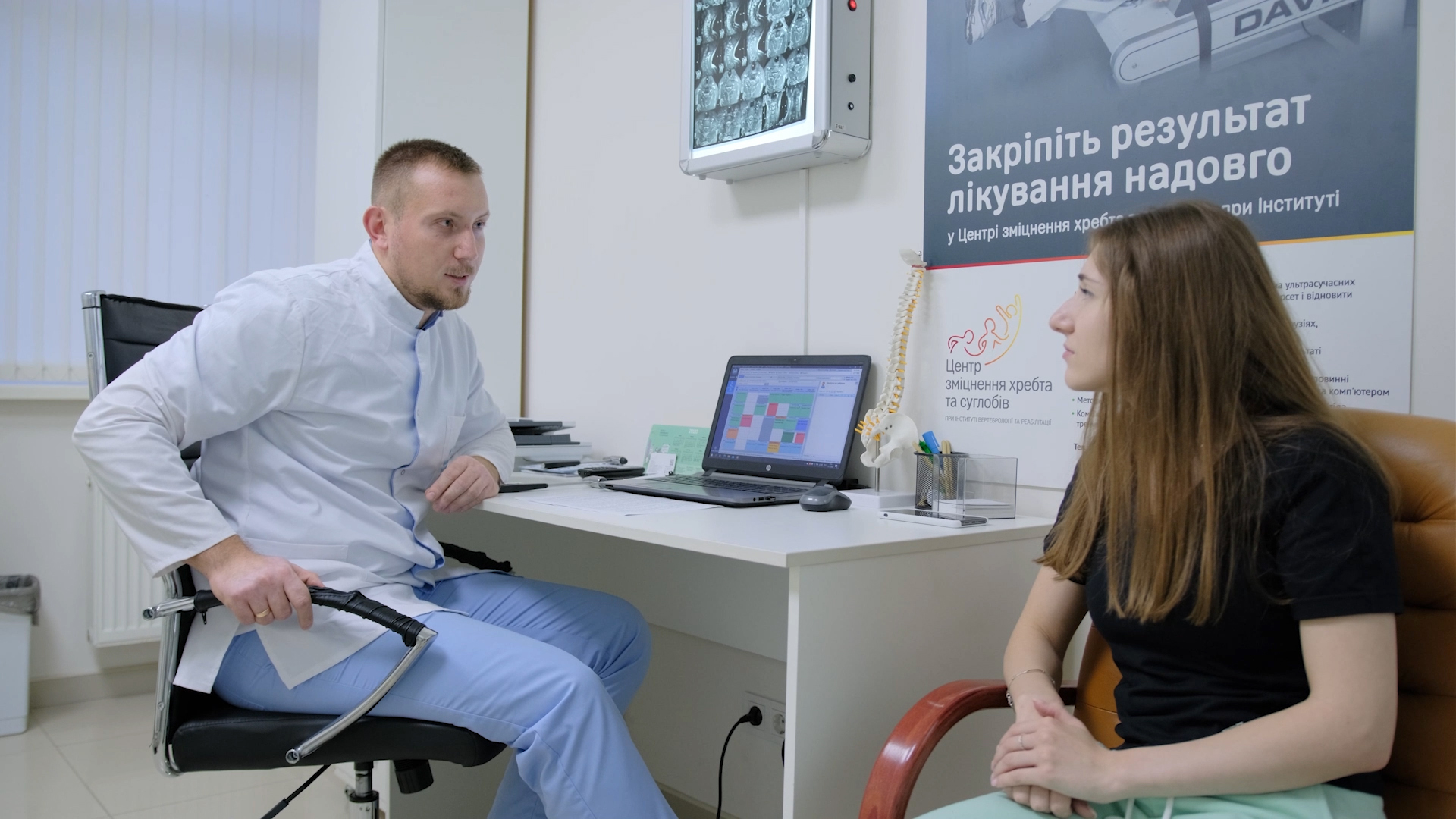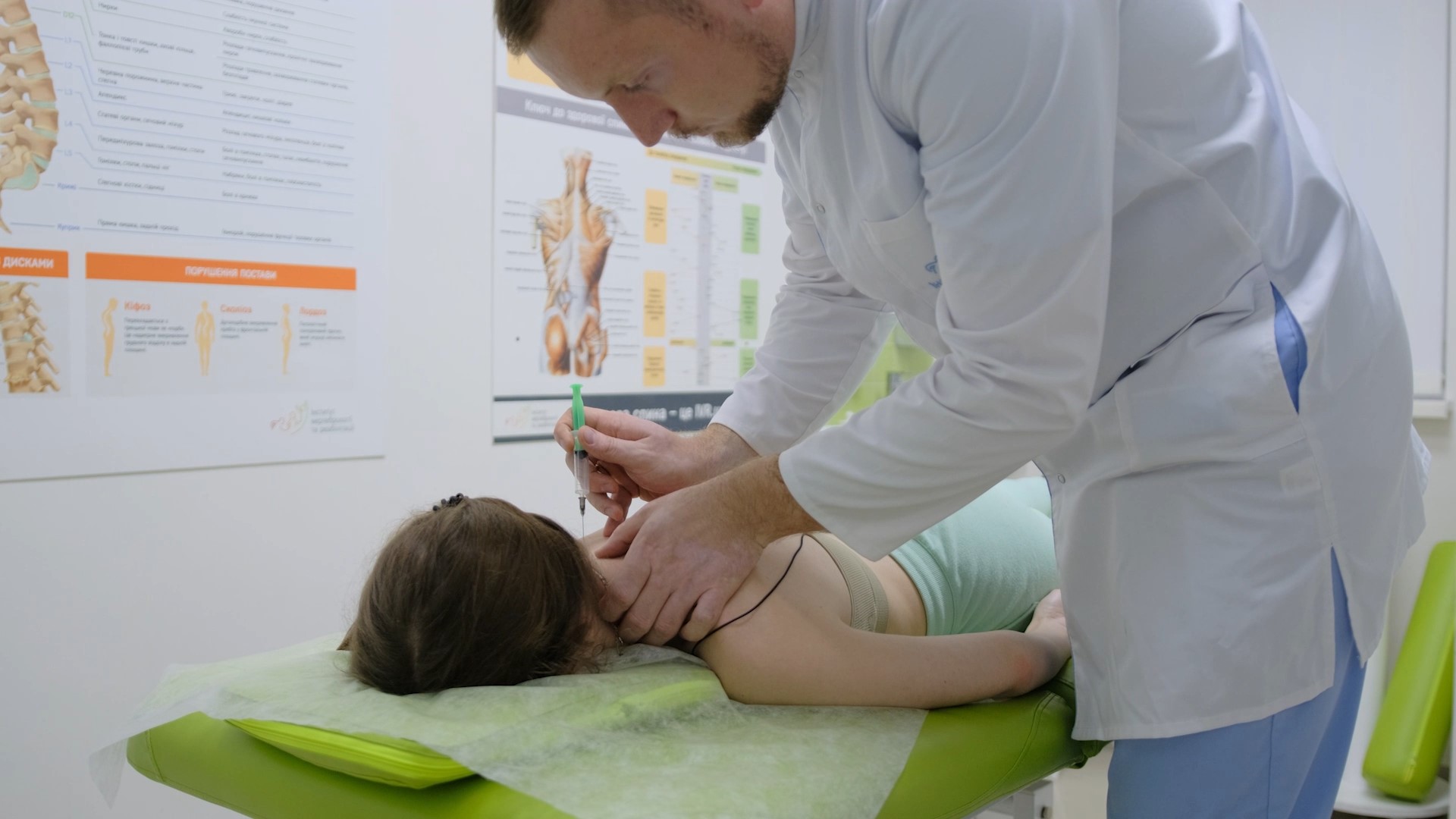Medical blockade of the back is used for diseases of the nervous system and the musculoskeletal system, as well as for the treatment of acute and chronic pain in the joints and spine. During the procedure, the drug is injected exactly into the required area and as quickly as possible relieves inflammation and pain.
At the same time, the Institute of Vertebrology and Rehabilitation first of all sets a goal - to eliminate the cause of the disease, and not just the treatment of symptoms. That is why our doctors use an integrated approach to treatment, and use painkillers and anti-inflammatory drugs only when necessary.
HOW DOES THIS PROCEDURE LOOK OUT?
To begin with, the injection “blockade” is extremely rarely used as an independent type of treatment, since it primarily affects the symptoms of the disease. Elimination of the cause of the disease and a steady positive effect is achieved only through complex therapy. The doctor after a thorough diagnosis prescribes an individual course of treatment, calculated for 5-10 sessions.

During each visit, the patient is usually performed several different procedures at once. Depending on the doctor's prescriptions, this may be a massage, spinal correction, physiotherapy, injection therapy and other methods. In the presence of acute pain, the blockade to the patient can be performed immediately at the primary consultation. In most cases, the patient receives injection therapy during the course of treatment, after the massage procedure.
In the first place, injections are used to relieve exacerbations when it is necessary to quickly remove acute pain and inflammation (for example, blockade with radiculitis). Usually, in such cases, the course of treatment includes 2-4 blockades. As practice shows, improvement comes after the 1st session.
The blockade is performed by a highly qualified doctor who has extensive experience in performing such procedures. The skin in the area of the injection is disinfected, and the specialist injects the mixture of drugs directly into the necessary points. This allows you to act purposefully on the focus of exacerbation, significantly reduce the inflammatory process and tissue swelling.

WHAT TYPES OF BLOCKAD DO WE APPLY IN THE INSTITUTE OF VERTEBROLOGY AND REHABILITATION?
Our specialists determine the course of treatment, the type of blockades and the necessary preparation for the injection individually, depending on the patient's condition. The Institute of Vertebrology and Rehabilitation uses several variants of blockades:
- Paravertebral blockade (for example, novocainic) quickly eliminate pain.
- Anti-inflammatory blockades are aimed at removing inflammation of the nerve root or other tissues, the muscle fascia, the place of attachment of the tendon to the bone, ligament, the transition of the muscle to the tendon, etc. These structures are abundantly saturated with proprioreceptors, which provide the spinal cord with nervous impulses to maintain adequate muscle tone. The inflammatory process in these tissues leads to a violation of proprioception and the emergence of muscle hyper tone or opposite to hypotension, and this in turn is one of the causes of an imbalance of the muscular system of the spine.
- Intra-and para-articular blockade is a blockade of a joint during inflammatory processes in it or periarticular tissues.
- Conductive blockades are used in tunnel syndromes and inflammatory processes in peripheral nerve structures.
ADVANTAGES OF THE METHOD:
- fast analgesic effect: the drug immediately falls into the very center of pain and inflammation.
- minimal side effects: unlike intramuscular injections, a minimal amount of the drug is used during the blockade, since it is injected directly into the necessary zone of action.
- the use of blockades provides an additional efficacy of the course treatment and accelerates its results with a slight increase in price.

INDICATIONS FOR TREATMENT:
The main indication for the use of therapeutic blockades is an acute pain syndrome or a pronounced inflammatory process. They can be classified as follows:
- pain syndrome of different localization;
- neuralgia and neuritis;
- radicular syndrome;
- tunnel syndrome;
- myofascial syndrome;
- enthesopathies;
- ligamento and tendinopathy;
- osteoarthrosis and arthritis;
- various rheumatoid processes.

Spinal hernia blockage: safety of the procedure
On the Internet, you can find a lot of articles with incorrect information that blockades with hernias of the spine and protrusions imply "a shot in the spinal cord." But the truth is that the pain in a hernia is caused by a radicular or myofascial syndrome. The epicenters of pain are thus not at all in the spine. Pain medications for hernias and protrusions are inserted into the muscles or the area of soft tissue edema, but not into the patient’s spinal cord. The most profound analgesia (epidural anesthesia) is most often used during surgery or childbirth. However, any blockade must be carried out with caution and only by a qualified specialist after consulting a doctor.
